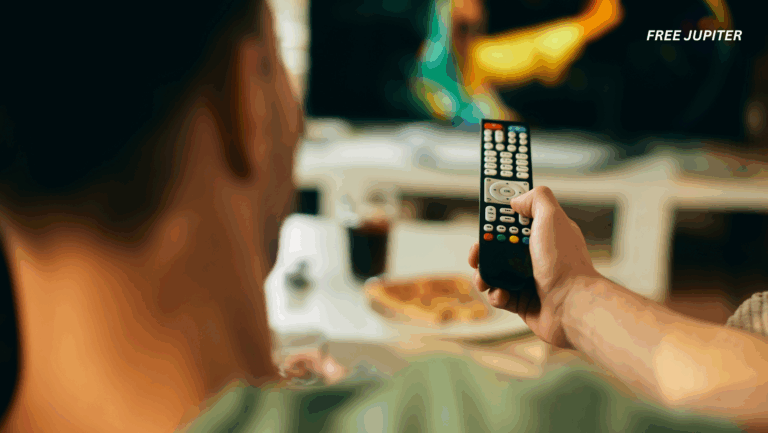Note: FreeJupiter.com shares general info for curious minds 🌟 Please fact-check all claims—and always check health matters with a professional 💙
Most of us like to think we shop because we “need” something. But the truth? Purchases are rarely about the item alone. They’re often tied to emotions—comfort, aspiration, distraction, or even identity.
Shopping isn’t just a financial transaction; it’s a psychological one. It can be soothing, thrilling, or even numbing, depending on what’s happening beneath the surface.
Here are nine common shopping behaviors that may reveal a deeper motivation than simply wanting a new gadget, outfit, or kitchen tool. None of these make someone “bad” or “flawed.” Instead, they can be clues worth paying attention to—little signals pointing toward what might actually need attention.
1. Chasing the High of the Purchase
The most exciting moment isn’t when the package arrives—it’s when the “Order Confirmed” screen flashes. That quick jolt of pleasure is the brain’s reward system firing. The trouble is, the rush fades fast. Once the novelty wears off, the item blends into the background, and suddenly the hunt for the next high begins.
If shopping feels like a quick fix, it’s worth asking: “What’s the real feeling I’m trying to escape?” Boredom? Stress? Loneliness? Naming it can loosen its grip.
One trick is to pause for just five minutes before buying, jotting down what change you hoped the item would bring to your day. Then try meeting that need in a direct way—call a friend, move your body, or put on music you love. More often than not, the craving passes.
Read more: Always Return Your Shopping Cart? You Likely Have These Strong Character Traits
2. Buying for the Life You Imagine, Not the Life You Have
Aspirational shopping is powerful. Maybe it’s expensive workout gear for the “fit” version of yourself, or an artist’s kit for the painter you dream of becoming. These purchases can be uplifting—but they can also highlight a gap between the life you want and the life you’re actually living.
It helps to ask a practical question: “If I owned this right now, when exactly would I use it in the next seven days?” If there’s no real plan, the purchase might be more about longing than practicality. There’s nothing wrong with dreaming, but dreams don’t have to live in your shopping cart. They can stay in a vision board, a journal, or a notes app—free of charge.
3. Hiding Receipts, Packages, or the Truth
When boxes get tucked into closets before anyone sees them, or prices are rounded down in conversation, the issue isn’t usually the purchase itself—it’s the secrecy around it. Secrecy often points to shame.
Hiding things might block the discomfort of guilt, but it also prevents the sense of pride that comes from intentional choices. A small step forward could be admitting, even privately, why the last purchase was made. That honesty—whether written down or spoken aloud—often reduces the shame spiral and replaces it with clarity.
4. Browsing Stores as a Soothing Ritual
Scrolling through shopping apps late at night isn’t always about wanting something—it can be about calming racing thoughts. Many people don’t shop at midnight because they’re “night owls,” but because that’s when the day slows down and emotions surface.
Retail feeds, with their endless “recommended for you” sections, act like a gentle sedative. But the relief is temporary, and the bill eventually arrives.
Instead of immediately opening a shopping app, try keeping a “Want Log.” Write down the item, the price, and what you were feeling in that moment. Looking back later often reveals fascinating patterns—certain moods, certain times, certain triggers. Awareness beats willpower every time.
5. Confusing Discounts with Value
There’s a sneaky thrill in thinking, “It’s 40% off, so I’m actually saving money.” But a deal isn’t real value if the product wasn’t needed in the first place.
One way to cut through the illusion is to ask: “Would I still want this at full price?” If the answer is no, the discount isn’t a gift—it’s a distraction.
Two strategies help here:
- The 72-hour rule: Add it to a wishlist, wait three days, and see if it still feels important.
- One-in, one-out: For categories you tend to overbuy (shoes, gadgets, beauty products), commit that one new item replaces one old item. This keeps spending more intentional and avoids clutter.
Read more: People Are Just Finding Out What the ‘I’m Not a Robot’ Button Really Does
6. The Endless Upgrade Cycle
Your headphones still work, but the new version promises slightly better sound. Your phone is fine, but the camera on the latest release is just a bit sharper. If upgrading has become habitual, it might not be about need—it might be about chasing novelty.
“New” feels like progress, even when nothing meaningful has changed. Setting “finish lines” helps break the cycle: for instance, only upgrading a phone when battery health dips below 80%, or replacing sneakers after a set number of miles. Real progress happens in skills, experiences, and relationships—not in marginally improved specs.
7. Shopping as a Substitute for Connection
For many, shopping carries a social element—unboxings shared online, messages from retailers that feel oddly personal, or even just the camaraderie of commiserating about shipping delays. Shopping can mimic community, but it’s a shallow stand-in.
As journalist Johann Hari once wrote, the opposite of addiction isn’t sobriety—it’s connection. Real connection grows in shared meals, neighborhood walks, game nights, book clubs, and volunteer work. When buying becomes a substitute for belonging, the emptiness lingers.
This doesn’t mean shopping can’t be fun. Setting aside a small “play” budget can keep it lighthearted, while also reminding us that lasting connection usually comes from people, not packages.
8. Avoiding Returns and Keeping the Tags On
When boxes sit unopened or tags linger “just in case,” it may signal hesitation. On some level, there’s recognition that the purchase wasn’t aligned, but returning it would mean admitting that truth.
The fantasy—the stylish shoes at a future event—feels better than the reality (blisters waiting to happen). Creating a “return ritual” can make the process less daunting. Block off a short weekly time slot to close loops: return items, file receipts, and clear shopping clutter. That small act of completion clears both space and mental energy.
9. Buying as a Way to Feel in Control
Here’s a ninth habit that often hides in plain sight: shopping as a response to chaos. When life feels unpredictable, buying something new can deliver a brief sense of order. Choosing colors, sizes, or models creates the illusion of control in a world that often feels uncontrollable.
The problem is, the sense of stability fades quickly—leaving both the original stress and the new bill behind. A healthier option is to channel that desire for control into areas where choices have lasting impact: organizing a workspace, planning a schedule, or even rearranging furniture. These actions offer a more durable sense of order without the financial aftermath.
Read more: If You Endured These 10 Challenges Before Age 30, You’re Stronger Than Most People Will Understand
Final Thoughts
Shopping itself isn’t the enemy. It’s part of modern life, and when done intentionally, it can be fun, useful, and even joyful. The challenge comes when it slips into a substitute for emotional needs—comfort, belonging, progress, or control.
A few practical shifts can make all the difference:
- Name the feeling first. Even a quick “I’m restless” or “I’m stressed” can be enough.
- Build friction. Remove saved cards, unsubscribe from marketing emails, or move apps off your home screen.
- Create quick alternatives. A song, a stretch, or a short journal entry often meets the need more directly.
- Budget for joy. A set “fun fund” removes guilt while preventing overspending.
- Track usage, not just spending. Notice which items get used, and which don’t.
At the end of the day, how we spend our time and attention is just as important as how we spend money. Shopping can fill moments, but it can’t fill a void. What truly fills those gaps—connection, purpose, creativity, and presence—can’t be bought, but it can be built.
Image: Freepik.










